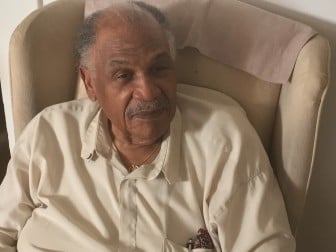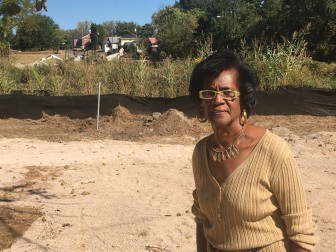The Junction: The Parsonage Bombing
On May 11, 1963, a bomb blast ripped through the home of the Rev. A.D. King, pastor of First Baptist Church Ensley. Like his brother, the Rev. Martin Luther King Jr., A.D. King was a civil rights champion. He led marches and held meetings in the church with fellow foot-soldiers.
Ensley residents who remember that tragic event and the role the community played in the civil rights movement say this rich history is important today as Ensley looks toward revitalization.
Dr. Alveda King was 12 when her family’s home was bombed. She remembers it vividly. Her mother was getting the dinner table ready for the next day, Mother’s Day. Her father was preparing his Sunday sermon.
“The whole front of the house exploded,” says Alveda. “The only thing that was left unbroken in the debris was a picture of Jesus. It was cracked, but Jesus’ face was intact.”
A few blocks away from the parsonage, Erskine Lewis, a deacon at First Baptist Church Ensley and a close friend of the Kings, heard the blast.
“I was at home, matter of fact, going over my Sunday School lesson, and I heard something say ‘boom,’” he recalls.
Like most of the neighborhood, Lewis rushed to the parsonage when he heard the blast. When he got there, he noticed two things: The King family was climbing over the fence to escape harm, and a policeman was already in the front yard.
“One policeman, standing in the yard,” Lewis says. “The police was the Ku Klux. And the smoke was still coming from the bomb.”
Many people suspected that the Birmingham Police Department, headed by Commissioner Bull Conner, was secretly an arm of the Ku Klux Klan. Lewis believes the policeman in the yard was connected with the bombing.
Places like the First Baptist Church Ensley were targets because civil rights leaders spoke from their pulpits. Dr. Martin Luther King, Jr. often stayed at the parsonage with his brother when he was in town to lead rallies and marches. Church leaders believe that the Klan bombed the parsonage that night thinking Dr. King was there.
Omie Crockett, the oldest deacon at First Baptist Church Ensley, recalls the days when the civil rights icon spent time in Ensley with his brother.
Several years ago, the church decided to sell the parsonage. So Crockett — a 94-year-old retired factory supervisor — bought it. He wanted to keep it as a reminder of Ensley’s history.
But while people in the 1960s were aware of the community’s contributions to the civil rights movement, younger people don’t know much about it, says Doris Smith, a retired educator and lifelong Ensley resident.
“If students and families knew exactly what happened back during that time when we were struggling for freedom, that would give them a sense of pride,” Smith says.
She’d like to see schools, churches, and other groups educate children and young adults about the community’s rich history.
“This pride that our forefathers had should certainly have a bearing on us,” Smith says.
That sense of pride, she says, will further motivate the community to revitalize and attract people to Ensley once again.
The Junction is produced by Mary Quintas and brought to you by WBHM and Finding America: a national initiative produced by AIR, the Association of Independents in Radio, Incorporated. Financial support comes from the Corporation for Public Broadcasting, the Wyncote Foundation, the John D and Catherine T MacArthur Foundation, and the National Endowment for the Arts.
Migrants deported from U.S. to Salvadoran prison remain under U.S. control
The government of El Salvador has acknowledged to United Nations investigators that the Trump administration maintains control of the men who were deported from the U.S. to a Salvadoran prison.
DHS ends Temporary Protected Status for thousands from Nicaragua and Honduras
Some 76,000 people from Nicaragua and Honduras were covered by TPS, which provides protection from deportation and grants work permits to people from certain nations affected by war or natural disasters.
BRICS nations push back as Trump warns of tariffs
Leaders of the BRICS group of emerging economies meeting for their annual summit had hoped to downplay any differences with the U.S. But even a toned down group proclamation drew the ire of President Trump.
DOJ says no evidence Jeffrey Epstein had a ‘client list’ or blackmailed associates
The two-page memo outlines the "exhaustive review" the department conducted of the Epstein files in its possession, and also reiterates that Epstein died by suicide, contrary to some conspiracy theories.
Floods are getting more dangerous around the country, not just in Texas
The deadly floods in Central Texas were caused by extremely heavy rain. Climate change is causing even more rain to fall during the heaviest storms.
Near old Montana mine, special clinic for asbestos-related illness fights to survive
The Center for Asbestos Related Disease in Libby, Montana, closed in May after a court judgment. The clinic's federal funding is also threatened. Patients with scarred lungs worry about what's next.








